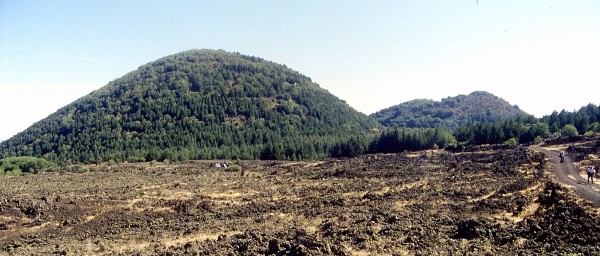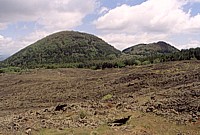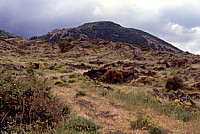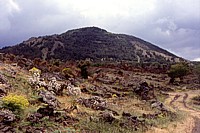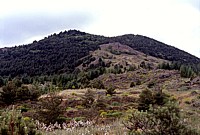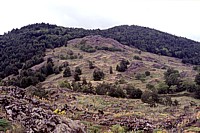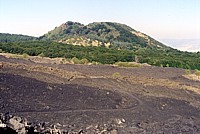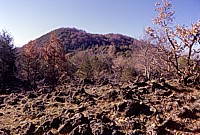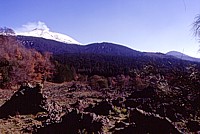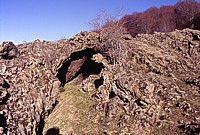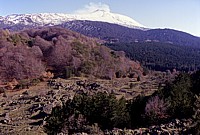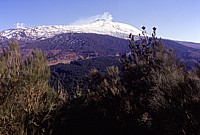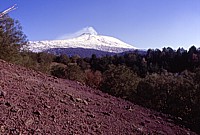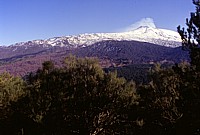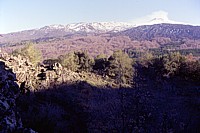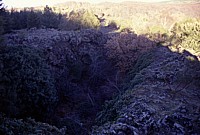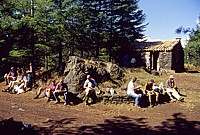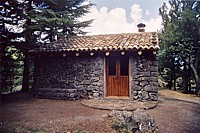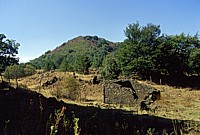| Etna
index |
||
| Geology | Geological history | Cones and craters |
| Eruptive characteristics | Eruptions before 1971 | Eruptions since 1971 |
| Etna and Man | References | Web sites |
| Weather forecasts | FAQ | Latest news |
Mamma
Etna's countless children
Monte Spagnolo
NNW flank, 14.953317° E, 37.826066° N
Summit elevation: 1536 m (western cone); 1519 m (eastern cone)
![]()
When
looking toward Mount Etna from the area of Randazzo, at the NNW base of
the volcano, two prominent cones can be seen lying about half way up the
slope. Maps of the volcano show only one name, Monte Spagnolo, for the
more westerly and larger of two cones; the slighly smaller eastern cone
is unnamed. The origin of the name is not known to me but almost certainly
has something to do with the temporary Spanish control on Sicily. Each
of the Monte Spagnolo twin cones rises nearly 100 m above its respective
base, and both have well-preserved summit craters, although it is not
known when they were formed, and if they are the product of one or more
eruptions. What appears likely is that at least one eruption has occurred
in the area after the formation of the two cones, with lava outflow occurring
from a vent lying in the saddle between the cone; poorly vegetated lava
flows also issued from vents high on the northeastern and northwestern
flanks of the larger of the two cones.
Much more recently, in March 1981, an extensive system of eruptive fissures
opened at a distance of only 1 km from the eastern of the Monte Spagnolo
cones, and the lowest vents on that fissure lay about 1.2 km NNE, at 1150
m elevation. The 1981 eruption was probably the only eruption in this
area during the past millennium.
The two Monte Spagnolo cones were among the first of Etna's flank cones
that I climbed, as early as February 1998. The climb is rewarded with
breathtaking panoramic views of the NNE flank of Etna. I have returned
to the area on several occasions; the photographs shown on this page were
largely taken during visits in 1998, 1999, 2001 and 2002.
Copyright © Boris Behncke, "Italy's Volcanoes: The Cradle of Volcanology"
Page set up on 21 February 2004

